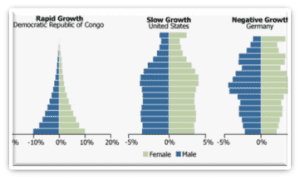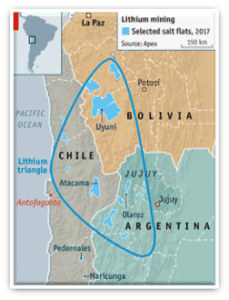Day-586
Quiz-summary
0 of 5 questions completed
Questions:
- 1
- 2
- 3
- 4
- 5
Information
DAILY MCQ
You have already completed the quiz before. Hence you can not start it again.
Quiz is loading...
You must sign in or sign up to start the quiz.
You have to finish following quiz, to start this quiz:
Results
0 of 5 questions answered correctly
Your time:
Time has elapsed
You have reached 0 of 0 points, (0)
Categories
- Not categorized 0%
- 1
- 2
- 3
- 4
- 5
- Answered
- Review
-
Question 1 of 5
1. Question
1. Consider the following pairs:
Refugee camps in news – Places/Countries
1. Jenin camp – West Bank (Palestine)
2. Adre camp – Bangladesh
3. Kutupalong camp – Lebanon
4. Ain Al-Hilweh camp – Chad
How many of the above pairs are correctly matched?Correct
Answer: A
Explanation:
Pair 1 is matched correctly:
• The Jenin refugee camp, also known as the Jenin camp, is a Palestinian refugee camp located in the city of Jenin in the northern West Bank.
• It was established in 1953 to house Palestinians who fled or were expelled from their homes by Israeli forces during and in the aftermath of the 1948 Palestine War.
• The camp has been in news due to a military operation launched by Israeli defence forces against armed rebels.
Pair 2 is matched incorrectly:
• Adre refugee camp is located in Chad near its border with Sudan.
• It is home to thousands of refugees who had fled Darfur to neighbouring Chad to escape fighting and ethnically targeted attacks in Sudan’s western region.
Pair 3 is matched incorrectly:
Kutupalong refugee camp: It is located in Ukhia, Cox’s Bazar, Bangladesh, and is inhabited mostly by Rohingya refugees who fled from ethnic and religious persecution in neighboring Myanmar.
Pair 4 is matched incorrectly:
• Ain al-Hilweh is the largest Palestinian refugee camp in Lebanon.
• It had a population of over 70,000 Palestinian refugees but swelled to nearly 120,000, as a result of influx of refugees from Syria since 2011.Incorrect
Answer: A
Explanation:
Pair 1 is matched correctly:
• The Jenin refugee camp, also known as the Jenin camp, is a Palestinian refugee camp located in the city of Jenin in the northern West Bank.
• It was established in 1953 to house Palestinians who fled or were expelled from their homes by Israeli forces during and in the aftermath of the 1948 Palestine War.
• The camp has been in news due to a military operation launched by Israeli defence forces against armed rebels.
Pair 2 is matched incorrectly:
• Adre refugee camp is located in Chad near its border with Sudan.
• It is home to thousands of refugees who had fled Darfur to neighbouring Chad to escape fighting and ethnically targeted attacks in Sudan’s western region.
Pair 3 is matched incorrectly:
Kutupalong refugee camp: It is located in Ukhia, Cox’s Bazar, Bangladesh, and is inhabited mostly by Rohingya refugees who fled from ethnic and religious persecution in neighboring Myanmar.
Pair 4 is matched incorrectly:
• Ain al-Hilweh is the largest Palestinian refugee camp in Lebanon.
• It had a population of over 70,000 Palestinian refugees but swelled to nearly 120,000, as a result of influx of refugees from Syria since 2011. -
Question 2 of 5
2. Question
2. Consider the following:
1. Nature of terrain
2. Caste and ethnicity of people
3. Availability of water
How many of the above factors play a role in determining the nature of rural settlements in India?Correct
Answer: C
Explanation:
• In India compact or clustered village of a few hundred houses is a rather universal feature, particularly in the northern plains. However, there are several areas, which have other forms of rural settlements.
• There are various factors and conditions responsible for having different types of rural settlements in India.
• These include:
physical features – nature of terrain, altitude, climate and availability of water
cultural and ethnic factors – social structure, caste and religion
security factors – defence against thefts and robberiesIncorrect
Answer: C
Explanation:
• In India compact or clustered village of a few hundred houses is a rather universal feature, particularly in the northern plains. However, there are several areas, which have other forms of rural settlements.
• There are various factors and conditions responsible for having different types of rural settlements in India.
• These include:
physical features – nature of terrain, altitude, climate and availability of water
cultural and ethnic factors – social structure, caste and religion
security factors – defence against thefts and robberies -
Question 3 of 5
3. Question
3. Consider the following variables:
1. Birth rate
2. Male and female composition
3. Death rate
4. Age-groups
How many of the above variables are displayed in population pyramids?Correct
Answer: B
Explanation: Only sex indicators and Age-groups are displayed in population pyramid.
About population pyramid-
• A population pyramid, also called an age-sex pyramid, is a graphical illustration that shows the distribution of various age groups in a population which normally forms a pyramid.
• It typically consists of two back-to-back bar graphs, with the population plotted on the X-axis and age on the Y-axis, one showing the number of males and one showing females in a particular population in five-year age groups.
• Males are conventionally shown on the left and females on the right, and they may be measured by a raw number or as a percentage of the total population.
• The age–sex structure reflects the demographic and socioeconomic history of a population over a period of time and, even their prospects for the future.
• It is the result of various factors, such as fertility, mortality, and migration.
Three main types of age-sex pyramids have been identified:
I. “Stationary” pyramid or constant population pyramid
o A pyramid can be described as stationary if the percentages of population (age and sex) remain approximately constant over time.
o In a stationary population, the numbers of births and death roughly balance one another.
II. “Expansive” pyramid or Expanding population pyramid
o A population pyramid that is very wide at the younger ages, characteristic of countries with a high birth rate and perhaps low life expectancy therefore leading to high death rate.
o The population is said to be fast-growing, and the size of each birth cohort increases each year.
III. “Constrictive” pyramid or Declining population
o A population pyramid that is narrowed at the bottom.
o The population is generally older on average, as the country has long life expectancy, a low death rate, but also a low birth rate.
o This may suggest that in future there may be a high dependency ratio due to reducing numbers at working ages. This is a typical pattern for a very developed country, with a high level of education, easy access to and incentive to use birth control, good health care, and few negative environmental factors
 Incorrect
Incorrect
Answer: B
Explanation: Only sex indicators and Age-groups are displayed in population pyramid.
About population pyramid-
• A population pyramid, also called an age-sex pyramid, is a graphical illustration that shows the distribution of various age groups in a population which normally forms a pyramid.
• It typically consists of two back-to-back bar graphs, with the population plotted on the X-axis and age on the Y-axis, one showing the number of males and one showing females in a particular population in five-year age groups.
• Males are conventionally shown on the left and females on the right, and they may be measured by a raw number or as a percentage of the total population.
• The age–sex structure reflects the demographic and socioeconomic history of a population over a period of time and, even their prospects for the future.
• It is the result of various factors, such as fertility, mortality, and migration.
Three main types of age-sex pyramids have been identified:
I. “Stationary” pyramid or constant population pyramid
o A pyramid can be described as stationary if the percentages of population (age and sex) remain approximately constant over time.
o In a stationary population, the numbers of births and death roughly balance one another.
II. “Expansive” pyramid or Expanding population pyramid
o A population pyramid that is very wide at the younger ages, characteristic of countries with a high birth rate and perhaps low life expectancy therefore leading to high death rate.
o The population is said to be fast-growing, and the size of each birth cohort increases each year.
III. “Constrictive” pyramid or Declining population
o A population pyramid that is narrowed at the bottom.
o The population is generally older on average, as the country has long life expectancy, a low death rate, but also a low birth rate.
o This may suggest that in future there may be a high dependency ratio due to reducing numbers at working ages. This is a typical pattern for a very developed country, with a high level of education, easy access to and incentive to use birth control, good health care, and few negative environmental factors

-
Question 4 of 5
4. Question
4. Consider the following pairs:
Major lithium mines – Countries
1. Pozuelos-Pastos Grandes – Chile
2. Greenbushes – Australia
3. Salar De Atacama – Bolivia
4. Salar De Uyuni – Argentina
How many of the above pairs are correctly matched?Correct
Answer: A
Explanation: Only Pair 2 is matched correctly
Context of the question:
• The Mines Ministry, through the state-owned Khanij Bidesh India Ltd (KABIL), has entered into a draft exploration and development agreement with Argentinan miner CAMYEN for possible acquisition and development of five-odd lithium blocks.
Important lithium mines in the world:
In Australia:
• Greenbushes, Western Australia
• Pilgangoora, Western Australia
• Mt Cattlin, Western Australia
• Mount Marion, Western Australia
In Brazil:
• Mibra, Minas Gerais, Brazil
In Chile:
• Salar de Atacama, Antofagasta, Chile
Argentina:
• Pozuelos-Pastos Grandes lithium salt lake, Argentina
In Bolivia:
• Salr De Vyuni, Bolivia
Additional Information:
Khanij Bidesh India Ltd. (KABIL):
• Khanij Bidesh India Ltd. (KABIL) is a joint venture company set up with the participation of three Central Public Sector Enterprises namely-
National Aluminium Company Ltd. (NALCO)
Hindustan Copper Ltd. (HCL) and
Mineral Exploration Company Ltd. (MECL).
• The equity participation between NALCO, HCL and MECL is in the ratio of 40:30:30.
• Objective of constituting KABIL is to ensure a consistent supply of critical and strategic minerals to Indian domestic market.
Lithium Triangle:
Lithium triangle is made up of Argentina, Chile, and Bolivia—containing roughly half the world’s known lithium.
 Incorrect
Incorrect
Answer: A
Explanation: Only Pair 2 is matched correctly
Context of the question:
• The Mines Ministry, through the state-owned Khanij Bidesh India Ltd (KABIL), has entered into a draft exploration and development agreement with Argentinan miner CAMYEN for possible acquisition and development of five-odd lithium blocks.
Important lithium mines in the world:
In Australia:
• Greenbushes, Western Australia
• Pilgangoora, Western Australia
• Mt Cattlin, Western Australia
• Mount Marion, Western Australia
In Brazil:
• Mibra, Minas Gerais, Brazil
In Chile:
• Salar de Atacama, Antofagasta, Chile
Argentina:
• Pozuelos-Pastos Grandes lithium salt lake, Argentina
In Bolivia:
• Salr De Vyuni, Bolivia
Additional Information:
Khanij Bidesh India Ltd. (KABIL):
• Khanij Bidesh India Ltd. (KABIL) is a joint venture company set up with the participation of three Central Public Sector Enterprises namely-
National Aluminium Company Ltd. (NALCO)
Hindustan Copper Ltd. (HCL) and
Mineral Exploration Company Ltd. (MECL).
• The equity participation between NALCO, HCL and MECL is in the ratio of 40:30:30.
• Objective of constituting KABIL is to ensure a consistent supply of critical and strategic minerals to Indian domestic market.
Lithium Triangle:
Lithium triangle is made up of Argentina, Chile, and Bolivia—containing roughly half the world’s known lithium.



-
Question 5 of 5
5. Question
5. Which of the following best describes the term derecho, which was in the news recently?
Correct
Answer: C
Explanation:
About Derecho:
• A derecho, is “a widespread, long-lived, straightline windstorm” that is associated with a “band of rapidly moving showers or thunderstorms”.
• Being a warm-weather phenomenon, a derecho generally – not always – occurs during summertime beginning May, with most hitting in June and July.
• However, they are a rare occurrence as compared to other storm systems like tornadoes or hurricanes.
• For a storm to be classified as a derecho it must have wind gusts of at least 93 km per hour; wind damage swath extending more than 400 km.



Where do derechos usually occur?
• They mostly occur across central and eastern parts of the United States.
• Derechos have also been documented elsewhere across the world.
• In 2010, Russia witnessed its first documented derecho.
• They have also swept through Germany and Finland, and more recently in Bulgaria and Poland.Incorrect
Answer: C
Explanation:
About Derecho:
• A derecho, is “a widespread, long-lived, straightline windstorm” that is associated with a “band of rapidly moving showers or thunderstorms”.
• Being a warm-weather phenomenon, a derecho generally – not always – occurs during summertime beginning May, with most hitting in June and July.
• However, they are a rare occurrence as compared to other storm systems like tornadoes or hurricanes.
• For a storm to be classified as a derecho it must have wind gusts of at least 93 km per hour; wind damage swath extending more than 400 km.



Where do derechos usually occur?
• They mostly occur across central and eastern parts of the United States.
• Derechos have also been documented elsewhere across the world.
• In 2010, Russia witnessed its first documented derecho.
• They have also swept through Germany and Finland, and more recently in Bulgaria and Poland.

